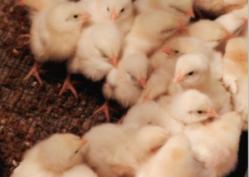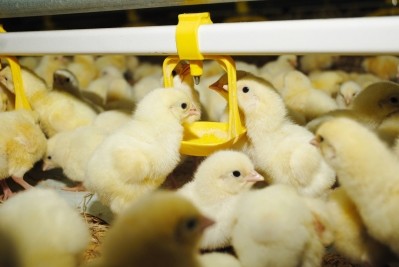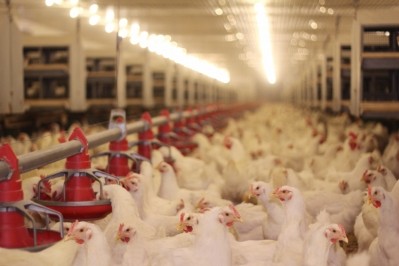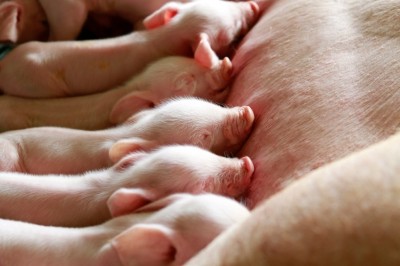Water, early nutrition boost feed efficiency in poultry

We caught up with Fernando Rutz, professor of physiology and monogastric nutrition at the Universidade Federal de Pelotas at Alltech’s One: the Idea Conference to talk about research being done to improve feed efficiency without the use of growth-promoting antibiotics.
There are a host of challenges that can alter feed efficiency in poultry, said Rutz, but steps can be taken to ensure birds get a stronger start.
“We’re talking more about banning antibiotics as growth promoters,” he told FeedNavigator. “In the past we leaned on antibiotics to get better feed efficiency, but not anymore. We changed our mind about using antibiotics to kill the pathogenic organisms to move in the direction of the host, the chicken or the swine, in terms of how to protect the swine against the pathogenic organisms.”
Feed and efficiency improvements
But a plan that involves methods to eliminate negative factors in the environment and facilities, improve management practices and an increasing focus on feed quality and access to water can help.
“It’s not only water, it’s not only feed – you have a group of components that surround the animal that you have to deal with.”
The production goal remains a 1:1 feed conversion ratio, but it is a challenging task, he said. “It’s difficult to imagine that we will get there, but maybe we will,” he added.
One step is to always start birds or animals for production on the best quality feed, said Rutz. “When the chick is first hatched, the gastrointestinal tract is not completely developed,” he added.
“It’s going to be developing during the first weeks of life,” he said. “If at this point in time you damage the enterocytes, the villi that is developing, you’re damaging this animal, [and] you’re going to delay the growth rate.”
The early feed also should not include animal plasma, but high quality vegetable oil and vegetable protein sources, he said. “The first week, try not to use animal by-product because it maybe peroxidased or have biogenic amines that may damage the GI tract,” he added.
It also remains important to have the correct amount of sodium in the diet, he said.
The main production focus should be on protecting the development of the gastrointestinal system, said Rutz. That effort may mean using a mycotoxin binding agent, yeast-based additives, organic minerals, enzymes or a nucleotide supplement.
“Water has a tremendous impact on feed efficiency,” said Rutz. “If a chick on the first day of life does not receive water, or receives water of bad quality, or does not receive feed that is going to probably destroy the enterocytes. You are delaying the immune system of the gut and that means you are damaging the gut health.”
Clean water needs to be provided in adequate quantity, and at a high quality, he said.
In addition to nutrition and water, animal genetics also have to be considered, said Rutz. “We always concentrate on feed and weight, but don’t forget that an animal is built by genes, and we already have some studies they’re going to make these genes work better,” he added.
That work looks improving feed efficiency through gene conditioning, and ways to prompt genes to express information in specific ways, he said.
What’s next?
There are currently ways to address most if not all the challenges that producers may see to bird growth and development, said Rutz. However, it doesn’t mean more work in the area isn’t needed.
“You never have an end of science,” he said.
Additionally, in his ongoing research, he is exploring the use of products like algae meal, mineral additives and enzymes in poultry production, he said. The experiments look at production of enriched food
The algae meal includes levels of the long-chain fatty acid docosahexaenoic acid or DHA and, when fed to laying hens, can be used to produce omega-3 enrich eggs, he said. However, when included in feed it can also improve the immune system and bone strength in birds.












